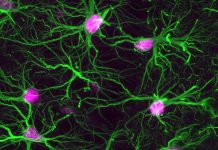
Every year, as the weather turns colder, flu season returns—bringing coughs, fevers, and the familiar reminder to get vaccinated.
But why does the flu thrive in fall and winter?
According to virologist Kurt Williamson from William & Mary, the answer lies in a mix of biology, weather, and human behavior.
Williamson studies viromes—the full collection of viruses in an environment—to understand their role in nature.
In humans, the influenza virus spreads easily because we’re social. You can catch it by breathing air near an infected person, or by touching a surface with live viral particles and then rubbing your eyes or nose.
Once inside your body, the flu virus attaches to cells in your respiratory tract.
It tricks these cells into letting it in, then hijacks their machinery to make thousands of copies of itself.
The virus’s name, “influenza,” comes from an early misunderstanding—scientists once thought a bacterium called Haemophilus influenzae caused the illness.
In reality, the flu is a viral infection that can weaken your immune system and make you more vulnerable to bacterial infections.
The flu vaccine changes every year because the virus constantly mutates. One process, called antigenic drift, happens when the virus’s RNA makes small copying errors—mutations—that accumulate over time.
Unlike human cells, which have proofreading enzymes, viruses don’t correct mistakes, so each generation changes slightly.
Occasionally, a much bigger genetic swap called antigenic shift occurs when two different flu viruses infect the same host and merge their genes, creating a new and potentially more dangerous strain.
But why does the flu hit hardest during the darker months? In 1992, British epidemiologist R. Edgar Hope-Simpson proposed that sunlight might hold the answer.
He noticed that flu outbreaks often peaked at the same time across distant cities—too synchronized to be explained by person-to-person spread alone. He suggested that reduced sunlight in winter weakens immune function and allows viruses to survive longer in the environment.
Cold and dry air also helps the virus linger. Low humidity keeps viral particles floating longer, while cold temperatures slow their decay—just like food lasts longer in the fridge.
And since people spend more time indoors together during the holidays, the virus has plenty of opportunities to spread.
So far, there’s no single explanation for flu season’s timing—sunlight, temperature, humidity, and human habits all likely play a part.
If you catch the flu, rest, stay hydrated, and eat nourishing food. Sleep helps your body redirect its energy toward healing. And while comfort food won’t cure you, a few potato chips won’t hurt. But the best defense remains simple: get your annual flu shot and wash your hands often.
If you care about health, please read studies that vitamin D can help reduce inflammation, and vitamin K could lower your heart disease risk by a third.
For more health information, please see recent studies about new way to halt excessive inflammation, and results showing foods that could cause inflammation.



